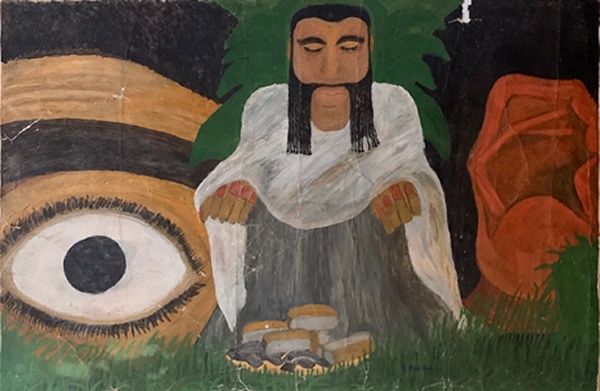I was born in Vlaardingen, The Netherlands, on June 2, 1957. I received my training in art in Utrecht en Kampen. In 1983 I graduated and since then I work as independent artist in Kampen. I work with oil paint.

When I started as a painter I was primarily intrigued with landscape. The interplay between wind, air, water and plants formed my point of departure to examine light, colour, brush work and structure. In this way paintings came about in which a still atmosphere is invoked by a sober and systematic structure. Through this minimalistic interest the landscapes gained a meditative character.
The discovery of ‘light’ as source of life heralded a new period. I often listened to the liturgical music of composers like Bruckner, Fauré, Duruflé, Messiaen, Britten and Kodaly. This resulted in a series of images of Requiems.

After this I looked for a new direction. This was during the time of a national crisis of animal disease in the Netherlands, which affected not only the animals. I left the music behind and started to leave room for associations. Symbols started to present themselves for life, growth and development. Fish, birds, heads, eyes, candles, and all kind of half recognizable figures appeared. Figuration materialized from the movement of the painting itself. The narrative element remained, but became subordinate.
.jpeg)
As my next step I worked on a series of paintings for which I first of all ripped out pictures of paintings of great masters from art magazines. I did the same with articles about philosophy and jazz. I tore out quotes that appealed to me. These quotes were removed from their context and thus made new connections. My connection. In this way something became nothing to reappear as something new. It surprised me that meaning could be born like that.
.jpeg)
I then left stories and symbols behind as sources of inspiration. The everyday landscape of my polder environment again became my point of departure. I try to capture the extraordinary of the ordinary. An ordinary ditch reflects the whole universe. It’s especially the things we call ‘ordinary’ that affect me. The ordinary grips me in its strangeness as it exceeds my understanding. In this series I started working with oil again. I have developed a special technique to apply paint, in many layers with a strong emphasis on the materiality of matter. Through the layering a special spatiality arises. The image as ordinary reality makes the extraordinary tangible.
.jpeg)
An artist exchange to Israel caused my themes to change again. I was touched by the unholiness of the country. It had struck me before that people apparently live in a caricature of their self-made cognitive concepts, but in Israel this produces an intolerable situation. In Israel the cognitive concepts tumble over each other and each concept murders the life of the other (das Leben der Anderen). And this has been happening for thousands of years. It is a country in which the collision between the great world concepts is tangible in the soil, the air, the trees, the desert. The whole creation is moaning there.
.jpeg)
This forced me to consider my mental images. It spurred my interest in what is absent in them, inspired by looking at Herod’s bath, in the Masada, in the dug up layers of history one looks down into a kind of box, seeing a world that does not exist. In fact one looks at an absence, which at the same time is present. We also watched excavations at the Wailing Wall, at holy floors of absence. I started to paint spaces on worthless materials; temporariness on board. A strange series of looking spaces emerged with music stands and chairs, views of empty, dynamically painted landscapes covering existing images from secondhand stores. Second-life. And I also make large paintings on which I paint architecture-like forms in which an indefinable spatiality makes itself felt.

I try to experience the mystery in and through my work. My faith naturally influences my work as every cognitive concept determines one’s actions. Yet I do try to get as close as possible to my own mystery, for concepts can conceal.
Website:
%20(1).png)











.jpeg)
